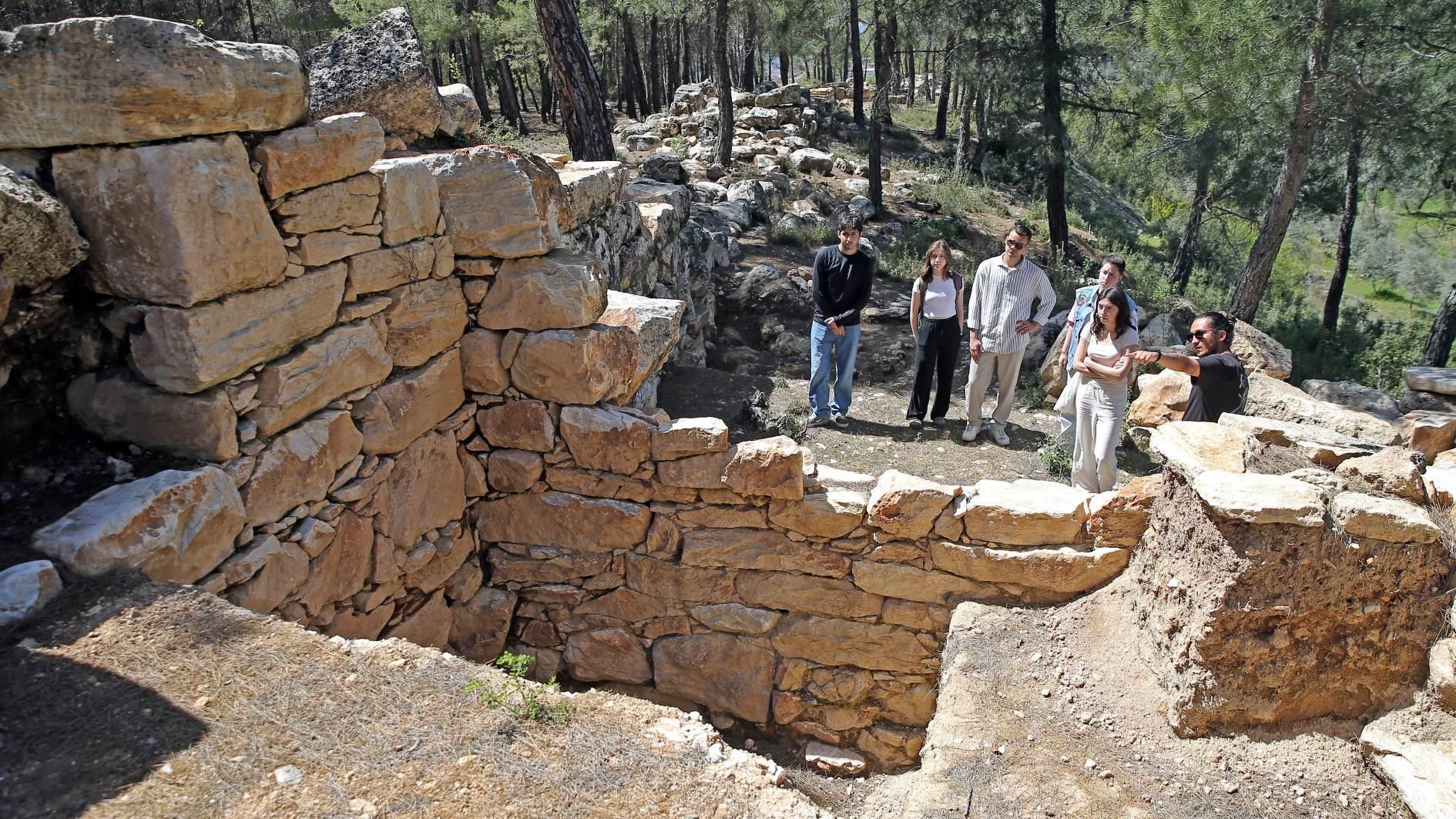
Ongoing excavation work in the Aegean province of Muğla's Kavaklıdere district is gradually bringing to light the impressive 2-kilometer-long city walls of the ancient city of Hyllarima, set to be integrated into the region’s cultural tourism.
Located in the Derebağ neighborhood and home to structures from the Classical, Hellenistic and Roman periods, the ancient city continues to draw interest from visitors with artifacts uncovered in various excavation areas.
Standing out as one of the oldest inland settlements of the Caria region, the walled city of Hyllarima features key architectural elements such as a theater, a council building and an agora.
The remnants of the city walls, which surround the settlement, will be preserved and restored in the coming period, becoming a new stop on the cultural tourism route.
Professor Bekir Özer, head of the excavation team, told the state-run Anadolu Agency that the ancient city had always needed to be defended against threats from Anatolia or the coasts throughout history.
He said this need for defense has been archaeologically and historically documented since the Hittite period.
“This site sits atop a large rock formation. When the residents decided to relocate the city from Asar Hill to this area in the fourth century B.C., they planned a settlement enclosed by high walls for protection. Based on our excavations and studies over the past few years, we’ve found that construction of the city walls began in the fourth century B.C. and continued into the early third century B.C. Especially in the eastern half of the city, the fortification system — with its walls and towers — has been preserved quite well, with the height of the walls reaching up to 4 to 5 meters in places,” he said.
Özer noted that the walls extend roughly 2 kilometers but added that this figure may change as work progresses.
He emphasized that the Carians needed a city with a strong defense system in the region at the time, which is why they chose Hyllarima.
Some towers and wall remains will be restored
Stating that the building materials used in the walls and structures are original, Özer explained: “In areas near marble sources on the city’s eastern side, the foundation stones are made of marble. But where marble was less accessible, they used stones cut from the rock mass on which the city was built. So, different techniques were employed. We believe these stones give Hyllarima its unique character, as the quarries or areas where the stones were extracted were later planned as parts of the city’s living spaces, workshops or streets. In short, whichever stone source was closest determined the wall construction method.”
Özer added that they plan to restore certain towers and wall remnants in the future. “In some areas, we intend to leave the walls in their original, ruined state. Our aim is to stimulate the imagination of visitors to the site,” he said.
Özer also pointed out that one of the city’s most defining features is its authentic street layouts from the Hellenistic and Roman periods, visible even without excavation.